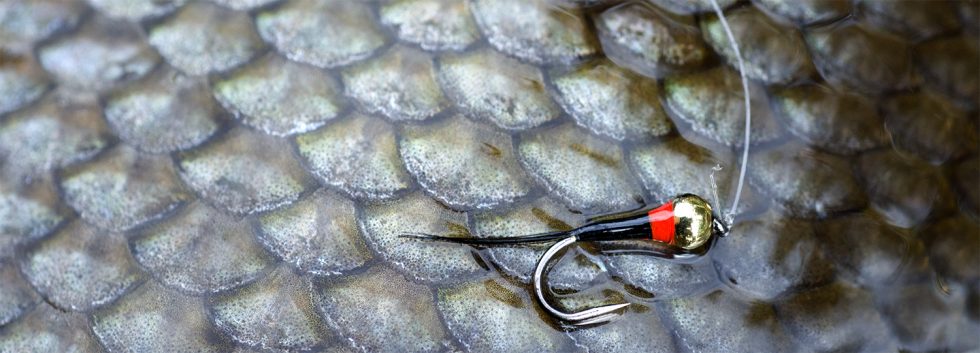
If you go fishing around in Europe you will notice a simple and ingenious thing that changes the fly fishing way: the Perdigon Nymph.
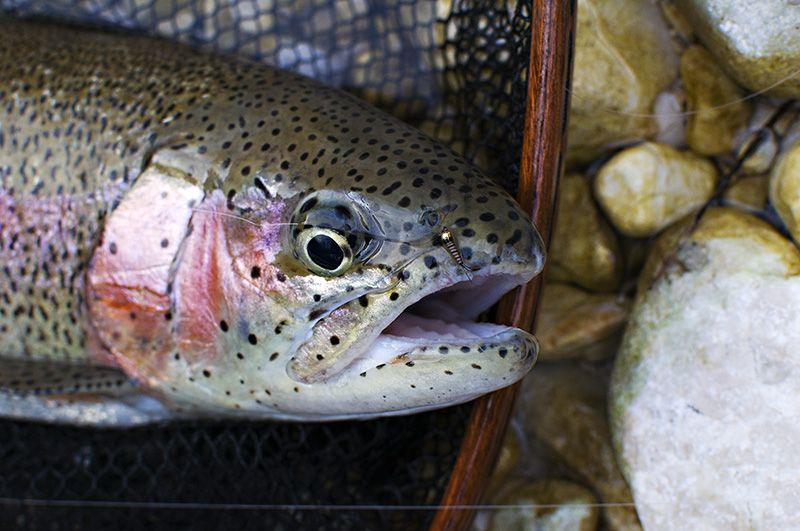
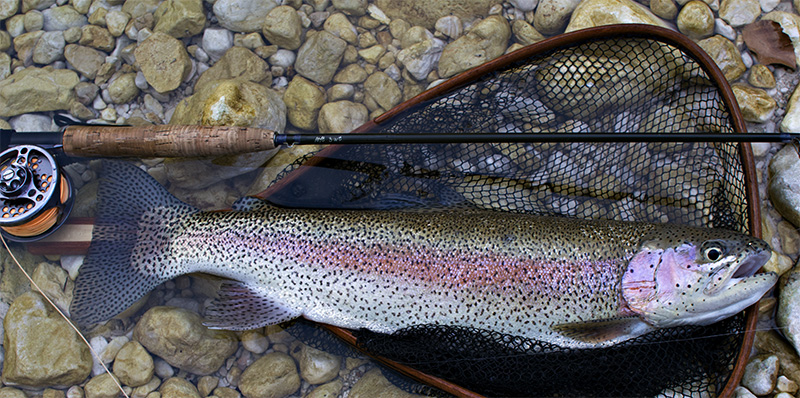
Thanks to this super easy to tie nymph, any fisherman can enjoy catching trout and grayling no matter if he/she is skilled or beginner in fly fishing.
How can this fly be so effective? What is the secret?
Perdigon nymph has such a simple design: a slim body, a simple tail, ribbing and an over-sized bead. No extra materials! Due to these reasons this nymph sinks like a rock. Perdigon nymph will sink faster and will stay much longer in feeding areas under strong currents compared to any other fly. The fly is a general pattern, it imitates different aquatic insects in the same time. Another important aspect is the size: perdigon nymphs are small and a small nymph will fool much easily a fish compared to a bigger fly.But there is a catch: How to choose the sizes and colors is very important! After using these nymphs for more than 10 years I realized that choosing the right color and the correct size is very important.
Perdigon nymphs and their colors:
*Black or dark colored nymphs are a must! These colors provide good contrast in any kind of water from ginger clear to dark or muddy. Dark colored nymphs are perfect for dark colored waters with granitic and sandstone type of river bottom.
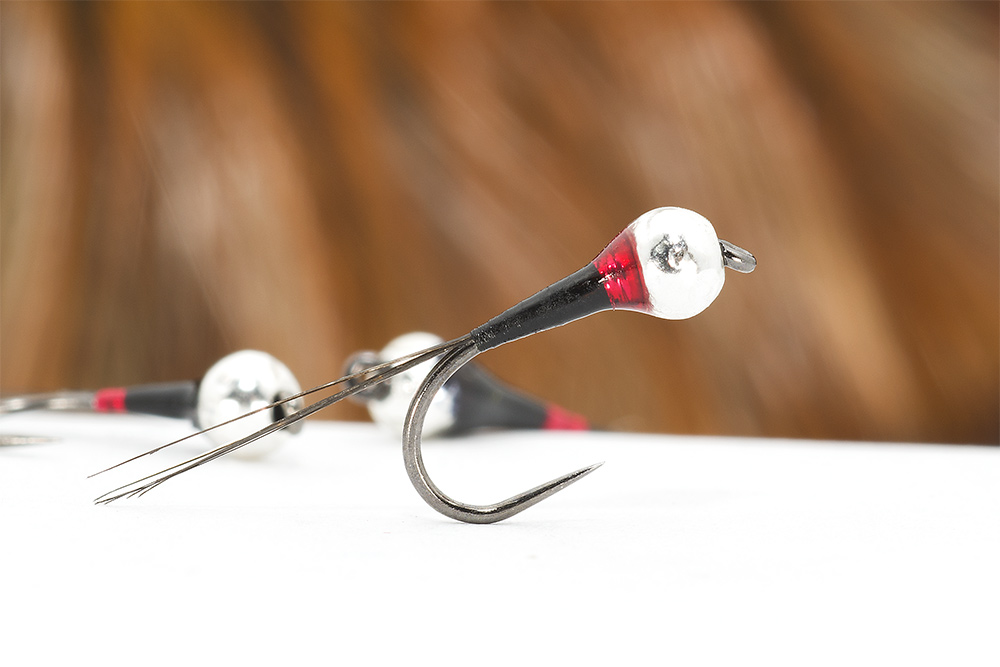
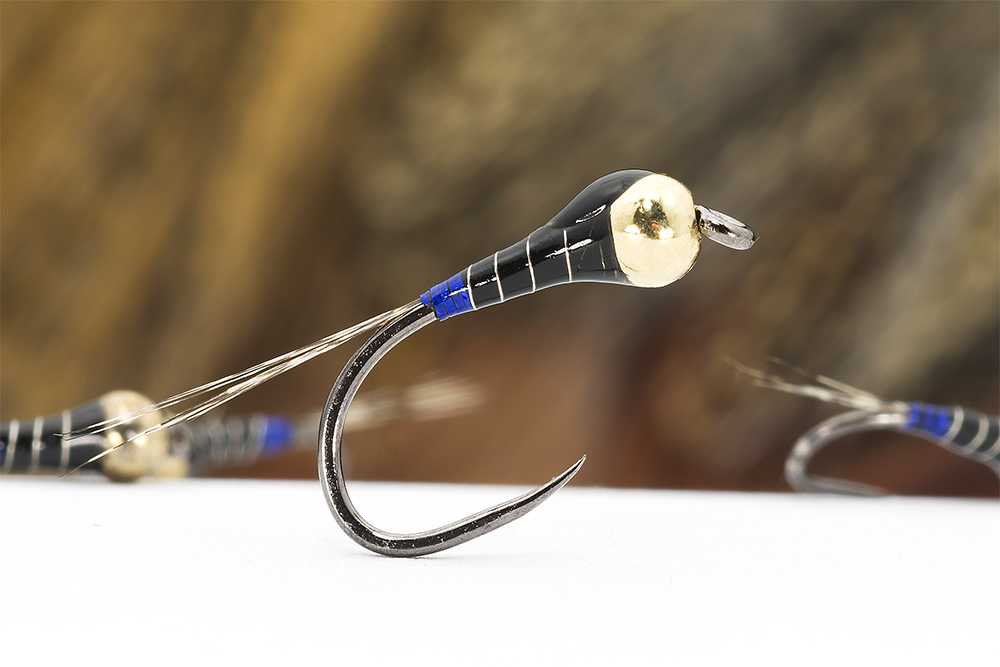
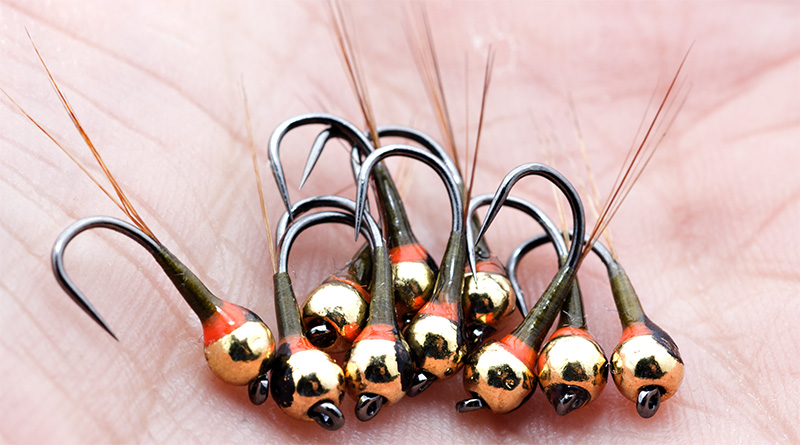
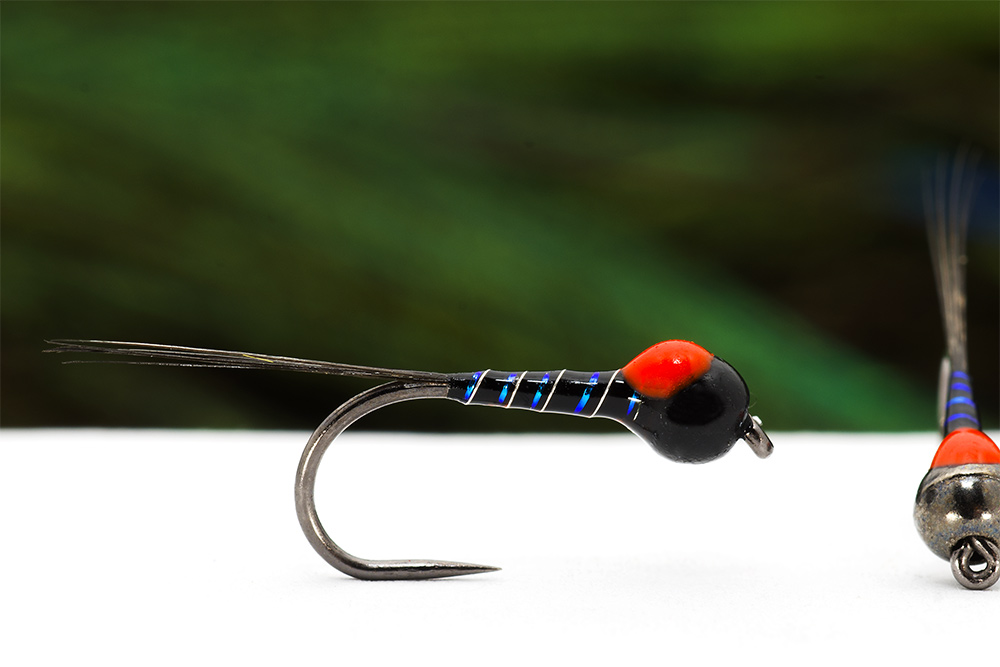
*Light colored nymphs in green, light green/olive, cream, yellow and tan are perfect for crystalline schist and calcareous stones. A combination between main colors and hot spot colors is important and it is always better to have the the same fly tied with a hot spot and with beads in different colors.
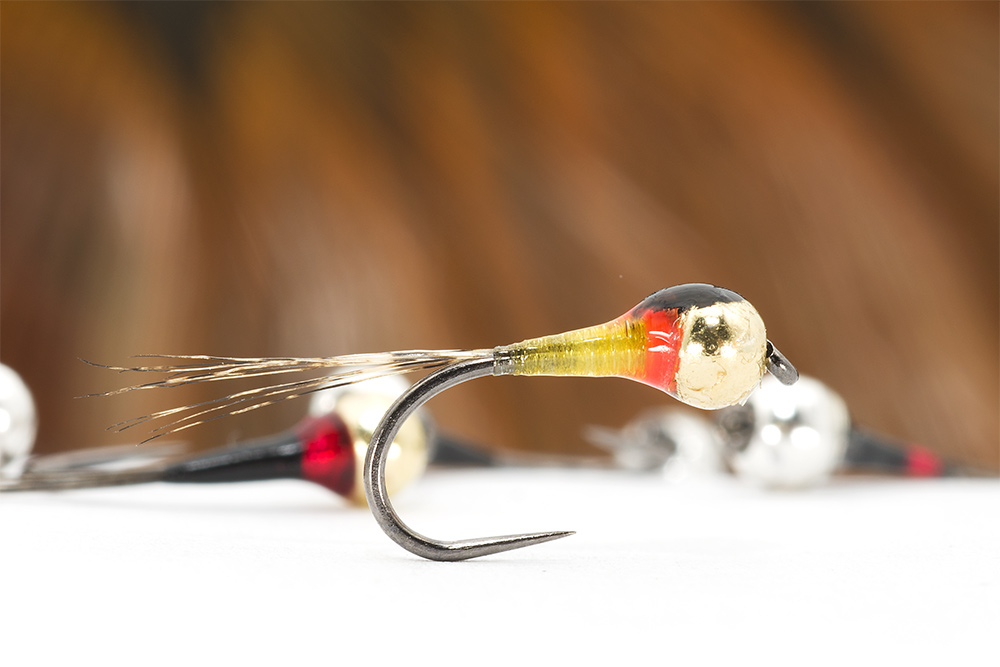
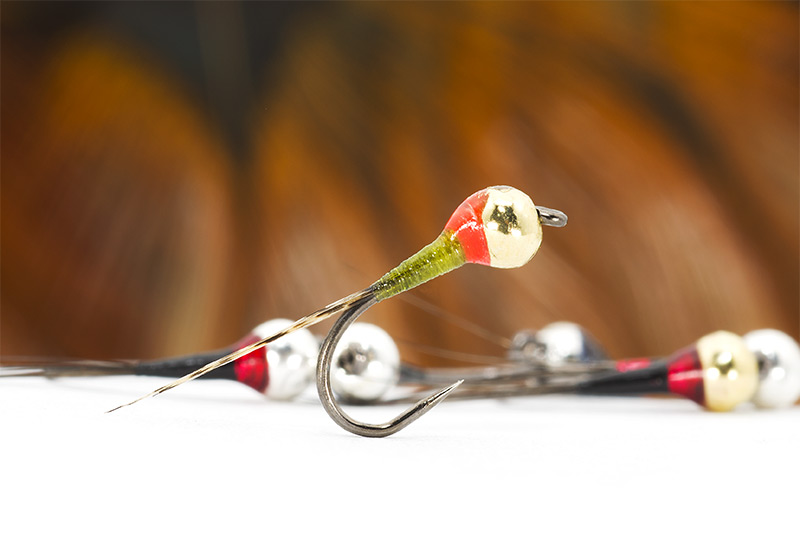
Where high fishing pressure educates the fish I recommend natural colors. On rivers where C&R is not so common and the number of fishermen is low, then a hot spot tied nymph will work better than one in natural colors.
Choosing the Perdigon right size:
*Big perdigon nymphs don’t work. A big nymph will scary the fish and will snag the bottom very often.
* Small is better!-biggest sized perdigon is #14-smallest sized is tied on #22-my efficient sizes according with my style are #16-18
Depending on the season I tie my nymphs in the following weight/ bead and size.
Spring Perdigon nymphs setting:
- #14hook is tied with 3.5mm tungsten
- #16hook is tied with 3mm tungsten
Summer Perdigon nymphs setting:
- #14hook is tied with 3mm tungsten
- #16hook is tied with 2.5mm or 2.8mm tungsten
- #18hook is tied with 2.5mm tungsten bead
Autumn Perdigon nymphs setting: :
- #14hook is tied with 3mm tungsten
- #16hook is tied with 2.5mm tungsten
- #20hook is tied with 2.5mm tungsten
- #22hook is tied with 2mm tungsten bead
Usually, I use 2 flies, the heavier on a dropper and the lighter and smaller on top.
Here is my logic behind choosing these sizes and how I combine these nymphs:
In Spring, the water is usually cold and trout is looking for more consistent food. So in this case big is better. Then river is bigger and trout will stay in strategic places, right under strong currents and behind big rocks. In these places water current brings the food like a waiter in a restaurant. Only heavy nymphs will arrive in those places. Big insects represent a consistent source of food, trout will try to pick those first. I often set a size #14 with 3.5/4mm combined with a #14 with 3mm tungsten if the water level is really big. Otherwise, I choose a size #14 combined with a size #16About colors: I prefer to start using the black version with a red hot spot ( in tail or behind bead). This color combination gives a great and effective contrast in all kinds of rivers. If the color is not working I go with a very light color like yellow pale ribbed with olive and I adjust if necessary.
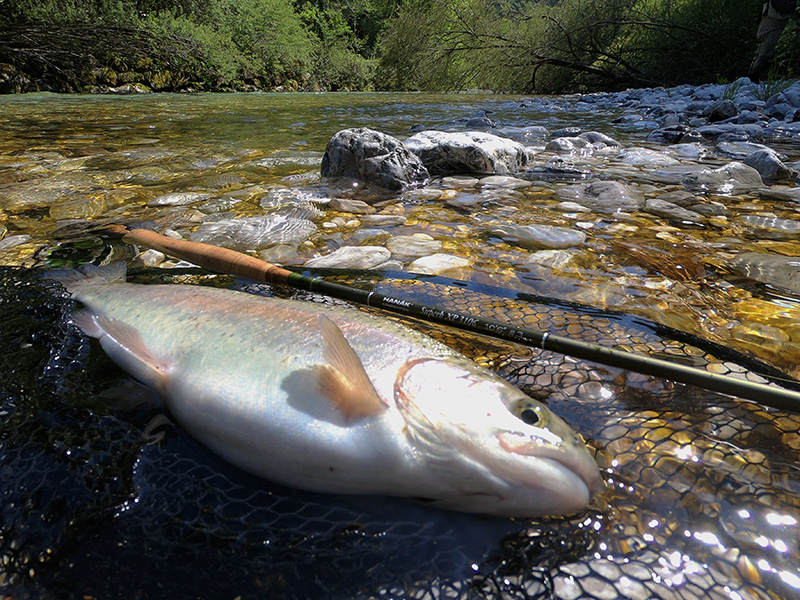
In Summer, fish are more active and they stay in constant currents where oxygen is abundant. In these cases I need a longer leader, more delicate and precise casts to present my flies as better as possible without scaring the fish. A combination between size #14 with a size #18 is what I choose medium-bigger rivers. On rivers with high fishing pressure I set a #16 nymph combined with another size #16 nymph with smaller bead or with a nymph in size #18.If I have to fish in small rivers I use a size #16 with small bead on a dropper. The smallest nymph, a size #20 is set on the tip. Long casts are a must if the water is super clear.The colors used in summer are: light yellow, light olive, green and black. Sometimes I use cream or ginger with or without hot spot.
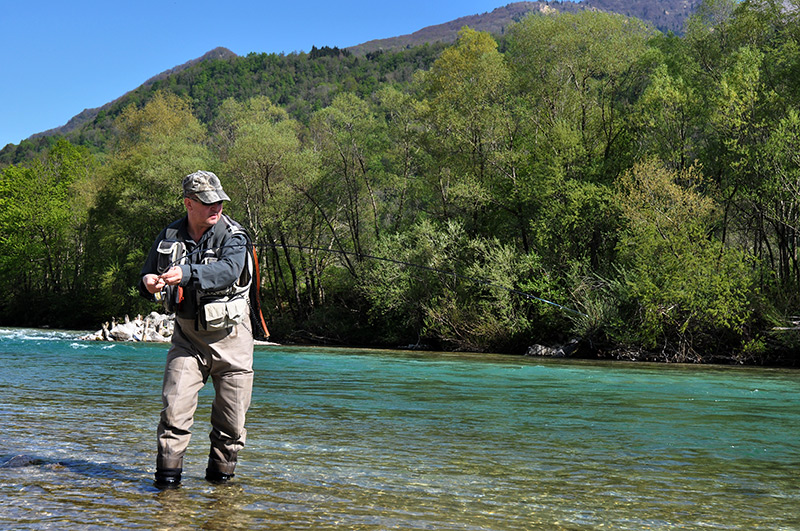
When Autumn is coming trout and grayling are changing the hunting places, they prefer the deeper currents or pools. In these conditions , with low level and crystal clear waters, fish prefer to stay down and they feed carefully. A bigger nymph, in size #14 is what I set on my dropper and a size #18 or a size #20 is in top. The active fly is usually the small one, the biggest one has the role to bring the little one in the feeding area.My main colors for autumn perdigon nymphs are brown, light brown, green, dark olive and black. I noticed that one of the best hot spots in autumn is blue, dark deep red and purple.
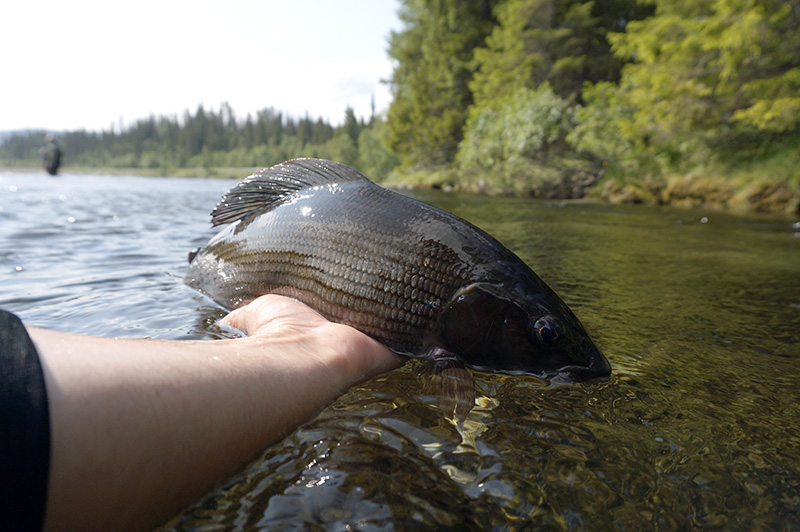
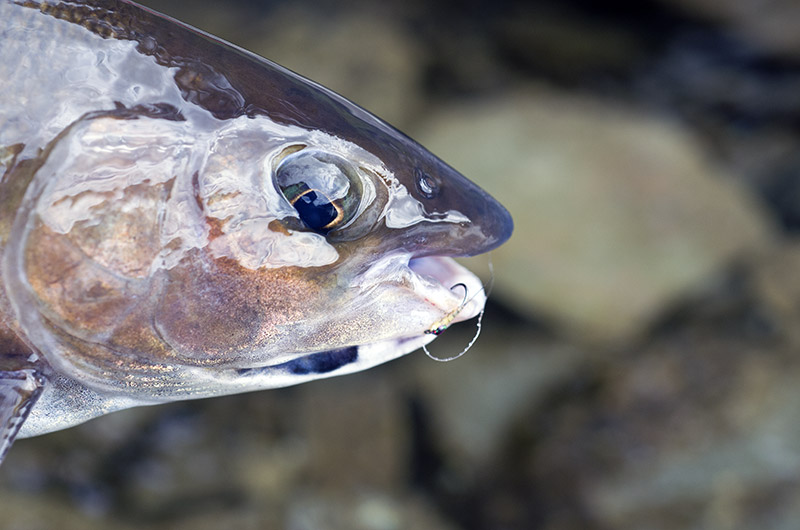
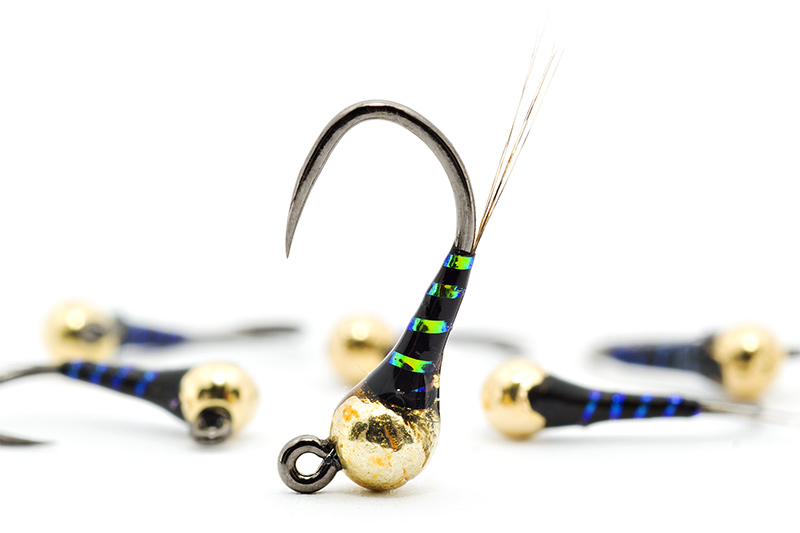
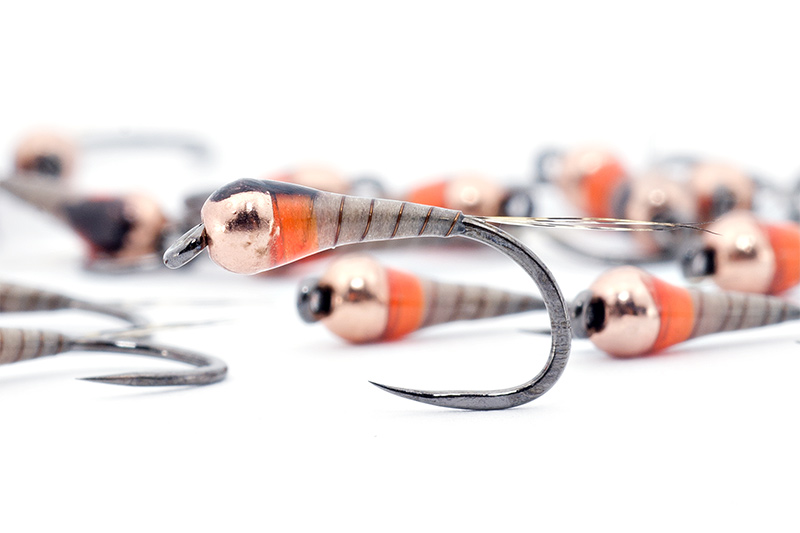
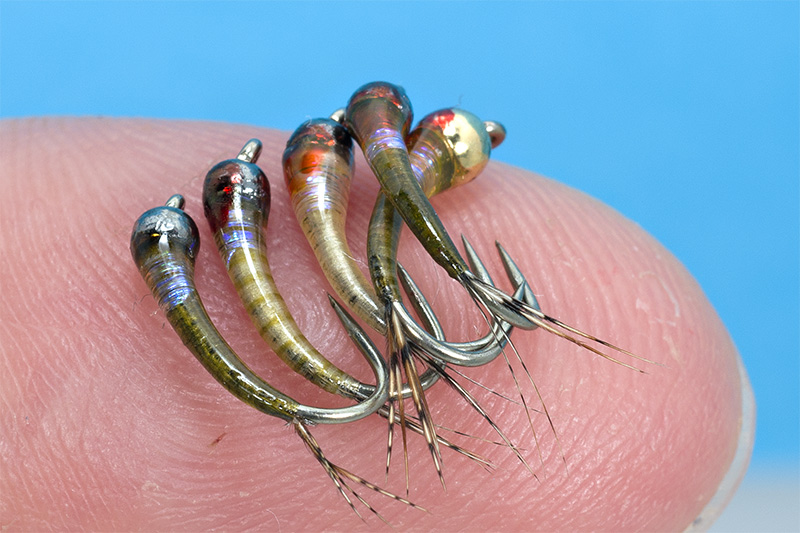
This article is made to help beginners who want to try these flies and they will learn faster and much easy how to choose and set perdigon nymphs. I spent lots of years together with my friends and Troutline team members to do this classification and to concentrate essential info about hot to fish and how to choose the proper perdigon nymphs depending of fishing conditions.
I hope you find this article interesting and helpful 🙂
Here is another article about perdigon nymphs for those interested in reading and learning more about them.
Cheers,
Lucian

July 24, 2019
What an awesome article, thanks lucian
July 27, 2019
A great article. Very useful information. Thanks
August 20, 2019
Thank you for that Lucian, very interesting and now off to the river !
August 28, 2019
Thank you Dave, I’m happy that you like it 🙂 cheers
August 26, 2019
Wunderbarer Artikel, sehr leerreich.
Tight Lines
Walter
August 28, 2019
Danke Walter,
Du bist sehr nett 🙂
TL,
Lucian
August 30, 2019
Your words have sense !! Thank’s Lucian !!
September 1, 2019
Grazie Alessandro, molto gentile 🙂
October 10, 2019
Thanks Lucian – great article!
October 11, 2019
Thanks Randy 🙂
June 1, 2020
Thanks for this article. I will try to implement the tips.
June 4, 2020
thanks for your comment 🙂 have fun applying my observations and if you have time I’d love to hear your thoughts
June 11, 2020
Great article! I noticed that no of your fly patterns are on jig style hooks, do you not use them?
Jerry
June 22, 2020
Thanks Jerry, very kind of you 🙂
For perdigon I prefer to use a classic hook. Jig hook has a lower rate of catching fish compared with a jig. It is called “hinge effect”. The same behave like in the case of floating line with sinking tip. Hook rate is decreased.
May 19, 2022
Great read, very informative. What style/brand hooks do you use? TIA
May 19, 2022
Hi Rocco,
I’m glad that you like it. I use Maruto D04HWW, Demmon N500 STG, Demmon ST320 and Hanak jig hooks of course.
cheers,
Lucian
November 20, 2022
I just stumbled across your blog-glad I did! Great info.
December 10, 2022
Thanks for your kind words 🙂
February 14, 2024
The nymphs in the bottom pic are phenomenal.
Beauties!
February 15, 2024
Thanks 🙂 I’m glad you like the flies and the photos 🙂
cheers